I'm switching a 5V 200mA case fan with a PCF8574. Since this expander is best used as a current sink (it can sink 25mA, but I think it can only supply something like 300uA), I supposed that a PNP would be best for driving a current sink NPN.
Purple: \$I_{C}\$ (datasheet maximum)
Blue: \$I\$ (circuit performance)
Note: R values aren't final, I still need to adjust those and 100mA was the lowest value NPN/PNP I had to hand.
It seems to me that two NPNs would be fine, since it only requires 8uA, and the expander can supply 300uA (if I'm not mistaken).
I wondered, what if you wanted active LOW instead of HIGH? For instance the PCF8574's outputs are HIGH at power on, so you may want your load to not turn on immediately. Is this an ideal way to switch a load with active LOW?
In either case, is it better to sink 8uA or source 64uA? The difference seems negligible in terms of efficiency for my case (though I suppose a very low power/high efficiency system could benefit from saving 56uA).
Additional questions:
- Are R17 and R15 needed? Since the expander is current limited, perhaps they're redundant?
- I suppose you could also high side switch the fan with a PNP (but I didn't have a powerful enough part to hand) and drive it with an NPN. For future reference, would this give me better performance?
- Is the answer down to a decision between BOM size and energy consumption? i.e. If I used two BC337's (instead of 337 and 557/550), that reduces the BOM, but slightly increases power consumption.


